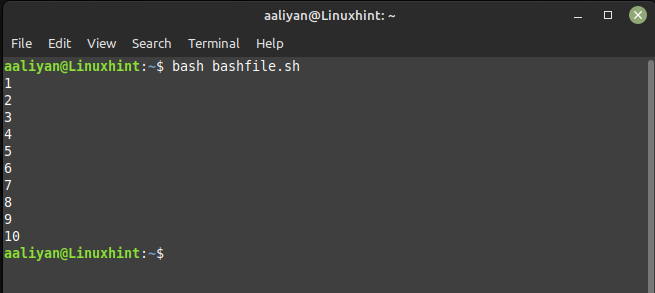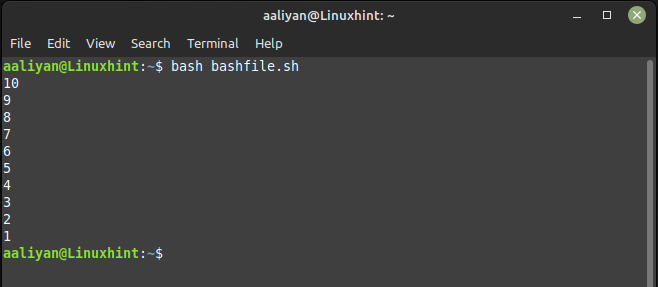What is ‘seq’ Command in Bash
The ‘seq’ command generates a sequence of numbers, which can be used for various purposes. It takes two arguments: the starting point and the ending point. By default, it increments by one, but it can be modified to increment by any value. The syntax for the ‘seq’ command is as follows:
seq [OPTION]... FIRST LAST
seq [OPTION]... FIRST INCREMENT LAST
Here, the first argument is the starting number of the sequence, the second argument is the ending number, and the third argument (if specified) is the increment value. Let’s take a look at some examples.
Example 1
To illustrate the use of ‘seq’ I have given a shell script that prints the sequence of numbers from 1 to 10:
for i in $(seq 1 10); do
echo $i
done
Here, the ‘seq’ command generates a sequence of numbers from 1 to 10, which is then used by the ‘for’ loop to iterate over the numbers and print them one by one:
Example 2
Here is another example that demonstrates the use of the ‘seq’ command, which prints the sequence of numbers from 10 to 1 in reverse order:
for i in $(seq 10 -1 1); do
echo $i
done
Here, the ‘seq’ command generates a sequence of numbers from 10 to 1, decrementing by 1 at each step. The ‘for’ loop then prints the numbers in reverse order:
Conclusion
The ‘seq’ command is a useful tool in Bash for generating sequences of numbers. It can be used in a variety of contexts, including loops, lists, and more. By understanding how to use the ‘seq’ command, you can create complex scripts and perform more advanced tasks in your Bash programming.


